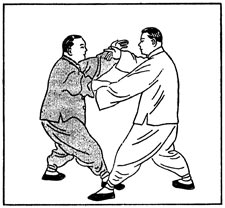When discussing the Taoist roots of Tai Chi, Lao Tzu’s Tao Te Ching is usually brought up. It’s seen as the defining document of Taoism and the source of the philosophy underlying the principles of Tai Chi. The imagery of flowing water, and softness overcoming the hard, comes from the Tao Te Ching.
But there was another document that came out of the same time period. Sun Tzu’s The Art of War, like the Tao Te Ching, was first brought to light around the Warring State Period, around 500 BC.
Both Lao Tzu and Sun Tzu might not have existed. Some researchers claim that both are simply the names assigned to compilations of older texts, edited and assembled around the same time. And both texts are aimed at an educated and elite readership. The Tao Te Ching was written for a prince, as a guide to good leadership. The Art of War was written for generals.
Both texts seem to be drawing from a common pool of wisdom, an oral tradition that predates both texts by possibly a millennia. The I ching, which is commonly attributed to the 2nd millennia BC, first introduced concepts such as yin and yang, trigrams, Bagua , and the basic nature of reality being change and balance.
Both make morality a cornerstone of their work, and adherence to the Way as the most efficient means of achieving one’s goals. They both describe the wise man as someone who has transcended his ego, whose actions are in synch with the natural ways of Nature.
In essence, they both describe how a Taoist “physics” is applied in their respective field, statesmanship and war craft, a sort of unified set of rules that can be applied equally to internal conflicts and external ones, to politics or to enlightenment.
Both authors see these rules as practical guidelines to be applied in daily life. Both describe an inherently virtuous world which has been corrupted by Man’s ignorance of the Way. And here the Way, the Tao, is adherence to the rules of Nature. The lesson is simple; live in accord with the laws of Nature, and Nature will provide you with a life of peace and equity.
It must be remembered that both books were written during the Warring State period, when war and conflict raged across the land. There must have been a strong desire for peace and order, and for a way to understand the events unfolding across the Chinese landscape. But the Warring States demanded a hard-nosed accounting of all facts, of Nature’s bounty and Man’s potential for cruelty.
Thus the tiles of the books: The Tao Te Ching can be translated as “ The Classic of the Way and Power”, and SunTzu’s work can also translated as “The Art of Conflict”. These are not books describing castles in the clouds.
If we turn to Tung Ying-chieh’s Secret Method we see:
In Tai Chi Chuan the ability to cultivate oneself physically and spiritually, but not to defend oneself, is civil accomplishment. The ability to defend oneself, but not to cultivate oneself, is martial accomplishment. The soft Tai Chi method is the true Tai Chi method. The ability to teach people the art of self-cultivation and self-defense, both cultivation and application, is complete civil and martial Tai Chi.
Here we see the teachings of the Tao Te Ching and the Art of War married together in Tai Chi. Both aspects need to be present in order for the practice to be complete.

